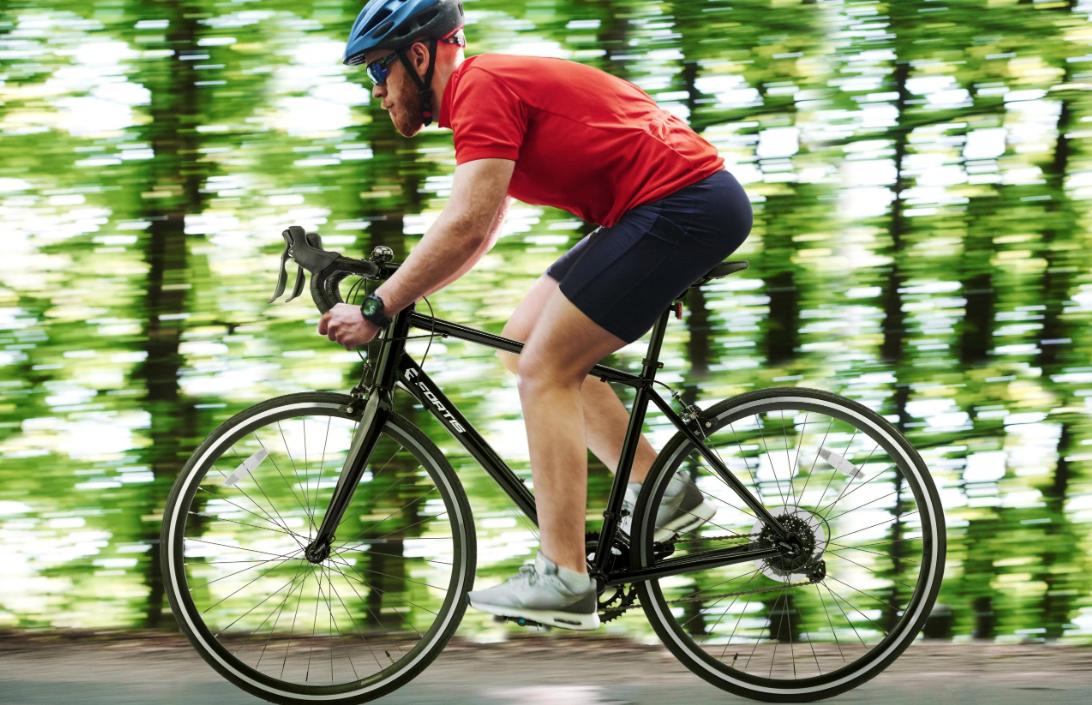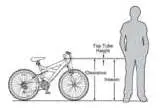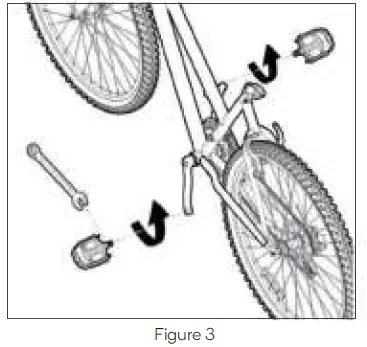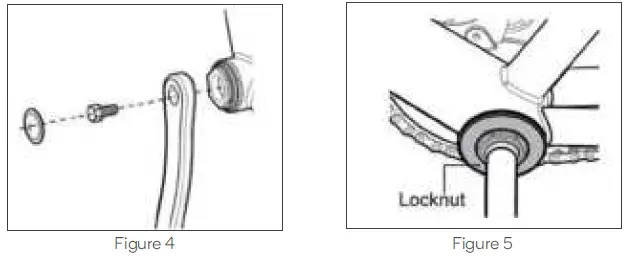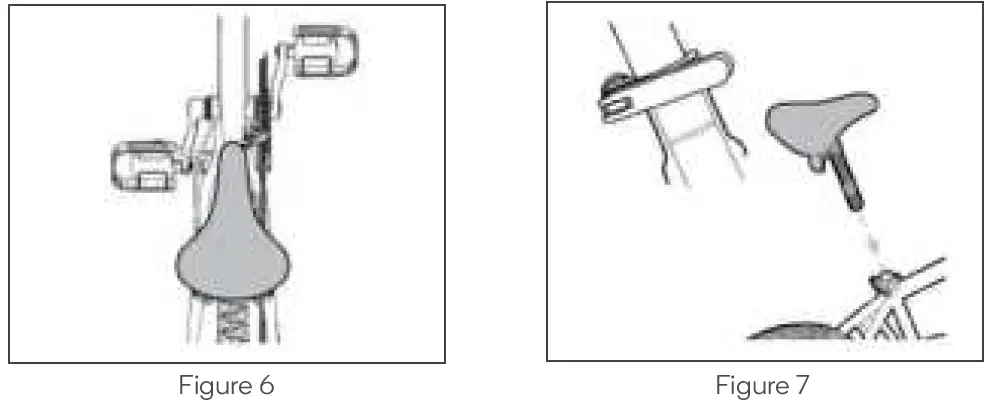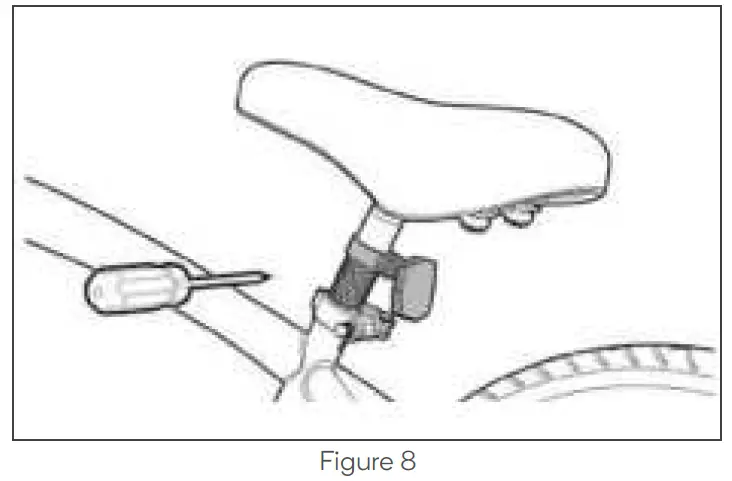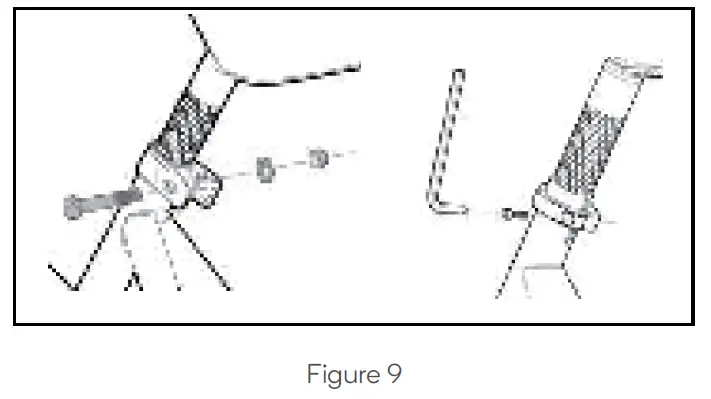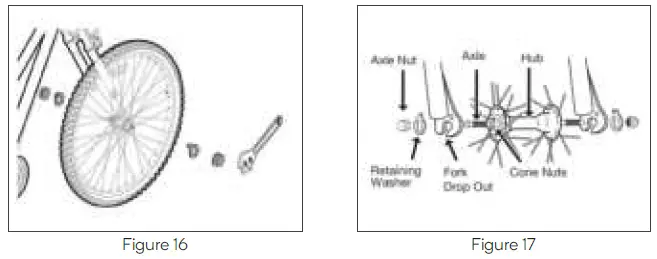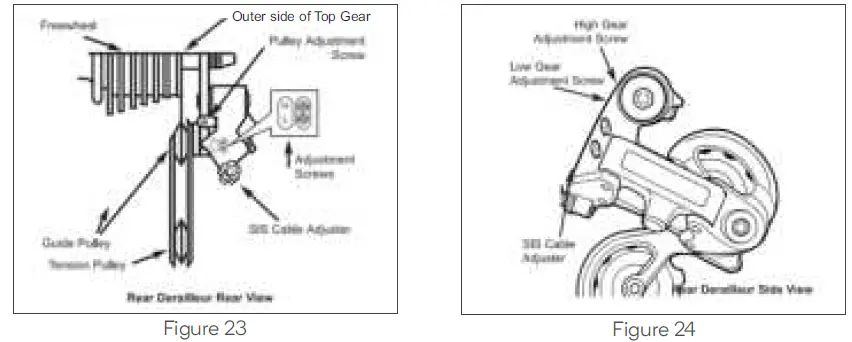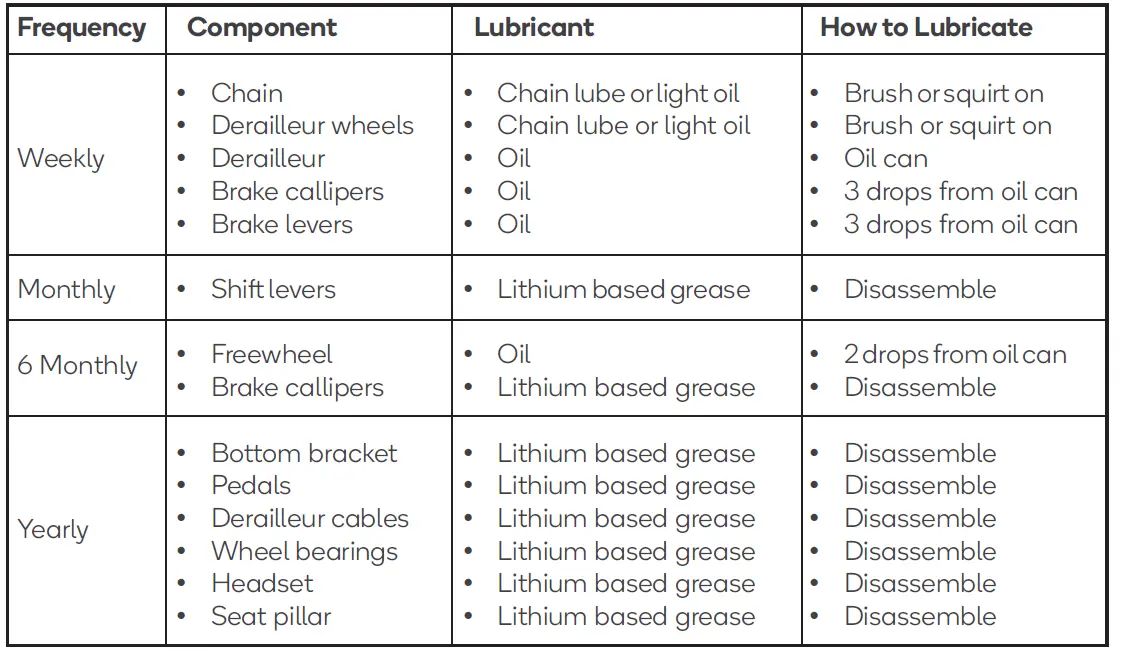FORTIS FS700CACRRA 700C Urban Master Carbon Road Bike
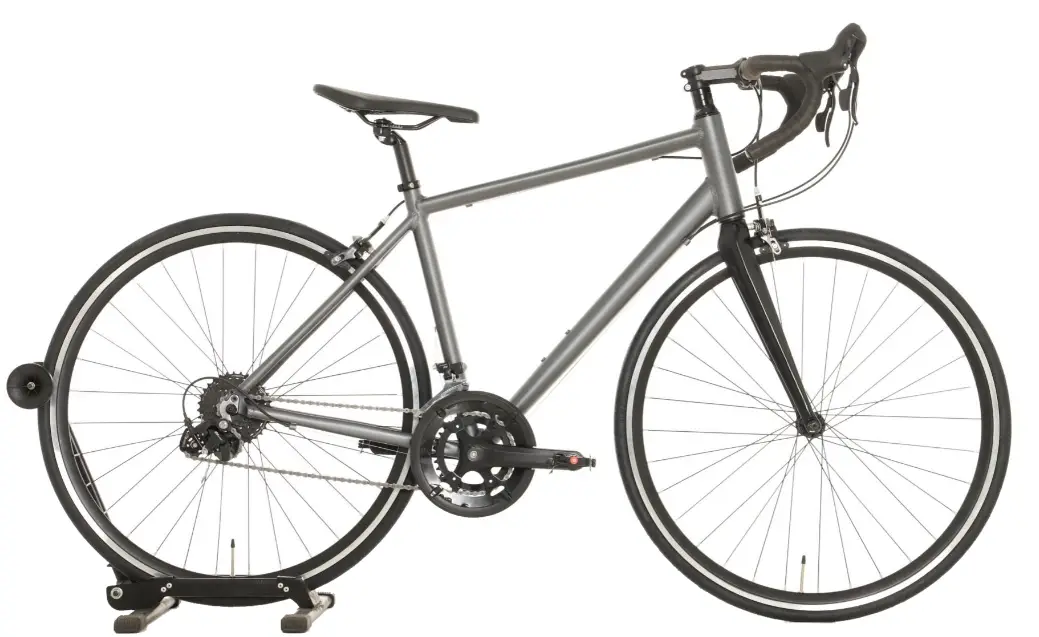
SAFETY & WARNINGS
This user guide was written to help you get the most performance, comfort, enjoyment and safety when riding your new bicycle. It is important for you to understand your new bike.
By reading this user guide before you go out on your first ride, you’ll know how to get the most from your new bicycle. It is also important that your first ride on your new bicycle is taken in a controlled environment, away from cars, obstacles, and other cyclists.
Before First Ride
- Before first use, please double-check the function of all the parts of your bike. If you have any doubts or if you detect a problem, please contact Kogan.com for support.
- Respect local and national road traffic regulations.
- For your safety, it is highly recommended that you wear a certified helmet.
- When used during heavy rain, snow, in slippery conditions or in the case of low visibility, be careful and adjust your speed.
- The illustrations in this user guide are used simply to provide examples; the components of your bicycle might differ. In addition, some of the parts shown might be optional and not part of your bicycle’s standard equipment.
- The following user guide is only a guide to assist you and is not a complete or comprehensive manual of all aspects of maintaining and repairing your bicycle. If you are not comfortable, or lack the skills or tools to assemble the bicycle yourself, you should take it to a qualified mechanic at a bicycle shop. Additionally, you can contact Kogan.com for support.
WARNING:Always wear a properly fitted helmet when you ride your bicycle. Do not ride at night.Avoid riding in wet conditions
HelmetsAlways wear a properly fitted, Australian standard approved helmet while riding your bike.
CorrectHelmet fits snug and covers forehead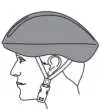
IncorrectForehead is exposed and vulnerable to serious injury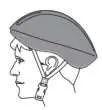
General WarningBicycle riding can be a hazardous activity even under the best of circumstances. Proper maintenance of your bicycle is your responsibility as it helps reduce the risk of injury. This user guide contains many WARNINGS and CAUTIONS concerning the consequences of failure to maintain or inspect your bicycle. Many of the warnings and cautions say, “you may lose control and fall”. Because any fall can result in serious injury or even death, we do not repeat the warning of possible injury or death whenever the risk of falling is mentioned.Kogan.com does not encourage: trick riding, ramp riding, jumping, aggressive riding, riding on severe terrain, riding in severe climates, riding with heavy loads, riding double, commercial activities; such use is inherently dangerous and can cause serious injury to the rider.
Note to ParentsIt is a tragic fact that most bicycle accidents involve children. As a parent or guardian, you bear the responsibility for the activities and safety of your child. Among these responsibilities are to ensure;
- That the bicycle that your child is riding is properly fitted to the child
- That it is in good repair and safe operating condition
- That the play of young children is supervised by an adult
- That you and your child have learned, understand and obey not only the applicable local motor vehicle, bicycle and traffic laws, but also the common sense rules of safe and responsible bicycling
As a parent, you should read this user guide before letting your child ride the bicycle. Please ensure that your child always wears an approved bicycle helmet when riding.
Choosing the Correct Size Bike Frame Sizing:
When selecting a new bicycle, the correct choice of frame size is a very important safety consideration. To determine the correct size bicycle for the rider:
- Straddle the assembled bicycle with feet shoulder width apart and flat on the ground.
- There must be at least one inch (2.5cm) of clearance between the highest part of the top tube of the bicycle and the crotch of the rider with the tires properly inflated.
- To measure the inseam, use a measuring tape to measure from the ground (with shoes on) to the inseam of your pants.
- Subtract the stand over height from the inseam measurement to ensure that you have the recommended amount of clearance. If you have less than one inch or more than three inches (2.5 to 7.5 cm), you may need to move up or down a frame size.

Weight Limit:The maximum structural weight recommendations for our bicycles are;
- 20 inch bicycles: 80 kg
- Adult bicycles up to 26 inches: 125 kg
CAUTION: For safe and comfortable riding there should be a clearance of no less than 1 inch between the inseam area of the intended rider and the top tube of the bicycle frame, while the rider straddles the bicycle with both feet flat on the ground.WARNING: If the bicycle is too large the rider cannot reach the pedals easily, or the ground when stopping which may result in loss of control and/or injury.
Road SafetyLike any sport, bicycling involves risk of injury and damage. You need to know and practice the rules of safe and responsible riding.
- In the interest of safer cycling, make sure you read and understand this user guide. Note and perform pre-ride safety checks.
- Some states and local laws may require that your bicycle be equipped with a warning device such as a horn or bell and a front and rear light if the bicycle is to be ridden are dark.
- Always wear shoes when riding a bicycle and avoid loose fitting clothes.
- Check your brakes frequently. The ability to stop your bicycle is critical. Roads are slippery when wet so avoid sharp turns and allow more distance for stopping. Caliper brakes may become less efficient when wet. Leaves, loose gravel, and other debris can also affect stopping.
- Always ride in the same direction as traffic. Never ride against traffic.
- Stop and look before you leave an alley, driveway, or parking lot. Ride only when it is clear.
- Follow the traffic flow in a straight line and stay close to the curb or in the bike lane, when available. Watch for cars moving in and out of traffic.
- Obey all traffic regulations. Most traffic regulations apply to bike riders as well as automobile operators.
- One rider per bike. Never carry other riders. This is dangerous and makes the bike harder to control.
- Always be alert. Pedestrians have the right of way. Be alert when riding near parked cars and ride far enough away from cars so that you won’t get hit if someone opens the car door.
- Use caution at all intersections and stop signs. Stop and look both ways before proceeding.
- Use hand signals. Communicate by using hand signals to tell other drivers what you are going to do. Signal before turning unless your hand is needed to control the bike.
- Proper lights are recommended if you ride at night. Be sure to have a strong head-light, a tail light, and a full set of reflectors. Check that reflectors are clean, straight, unbroken, and securely mounted.
- Never carry packages or objects which obstruct vision.
- Never hold onto a moving vehicle while riding.
- The kick-stand is designed to support the bicycle only, not the bicycle and the rider.
- Avoid the following hazards: drain grates, potholes, so road edges, gravel, sand, wet leaves, and/or any obstruction in the road. Failure to do so could cause wheel(s) to buckle and result in personal injury to the rider.
- Wet weather riding – riding your bicycle in wet conditions is not recommended. In wet conditions traction and braking power is reduced. Riding in such conditions could result in personal injury.
- Proper helmet use. A helmet that meets Australian standards should always be worn when riding a bicycle. The helmet should fit properly and be worn on the crown of the head, not tipped back. Ensure to replace your helmet at least every three years to ensure the structural integrity of the foam. Replace aeir impact, regardless of lack of visible damage to helmet.
- Use bike lanes when available. Also note that in certain states, cars may use bike lanes when turning.
- Respect “bicycles are prohibited” signs.
Night RidingRiding a bicycle at night is much more dangerous than riding during the day. A cyclist is very difficult for motorists and pedestrians to see. Therefore, children should never ride at dawn, dusk or at night. Adults who choose to accept the greatly increased risk of riding at dawn, dusk or at night need to take extra care both riding and choosing specialized equipment which helps reduce that risk. Consult your local bicycle shop about night riding safety equipment.
WARNING: Reflectors are not a substitute for required lights. Riding at dawn, at dusk, at night or at other times of poor visibility without an adequate bicycle lighting system and without reflectors is dangerous and may result in serious injury or death.WARNING: Do not remove the front or rear reflectors or reflector brackets from your bicycle. They are an integral part of the bicycle’s safety system. Removing the reflectors reduces your visibility to others using the roadway. Being struck by other vehicles may result in serious injury or death.
Child Safety RulesTo avoid an accident, teach children good riding skills with an emphasis on safety.
- Always wear a properly fitted helmet.
- Do not play in driveways or on the road.
- Do not ride on busy streets.
- Do not ride at night.
- Obey all traffic laws, especially stop signs and red lights.
- Be aware of other road vehicles behind and nearby.
- Before entering a street: Stop, look for traffic, enter only when safe.
- If riding downhill, be extra careful. Slow down using the brakes and maintain control of steering.
- Never take your hands off the handlebars, or your feet off the pedals when riding downhill.
SAFETY CHECKLIST
Before every ride, it is important to carry out the following safety checks:
Brakes:
- Ensure front and rear brakes work properly.
- Ensure brake pads are not over worn and are correctly positioned in relation to the rims.
- Ensure brake control cables are properly lubricated, correctly adjusted, and display no obvious wear.
- Ensure brake control levers are properly lubricated and tightly secured to the handlebar.

Derailleurs:
- Check that the front and rear derailleurs are adjusted and functioning properly.
- Ensure that the shier levers are securely attached.
- Ensure that derailleurs, shift levers, and control cables are properly lubricated.
- Shift through all the gears while pedaling to ensure that the derailleurs are adjusted and functioning properly.

Cranks & Pedals:
- Ensure pedals are securely tightened to the cranks.
- Ensure cranks are securely tightened to the bottom bracket and are not bent.

Frame & Fork:
- Check that the frame and fork are not bent, broken, or cracked.
- If either are found to be bent, broken, or cracked, they should be replaced.

Wheels & Tires:
- Ensure tires are inflated to within the recommended range as displayed on the tire sidewall.
- Ensure tires have tread and have no bulges or excessive wear.
- Ensure rims run true and have no obvious wobbles or kinks.
- Ensure all wheel spokes are tight and not broken.
- Check that axle nuts are tight.
- Do not over inflate.

Chain:
- Ensure chain is oiled, clean and runs smoothly.
- Extra care is required in wet or dusty conditions.
- On bicycles equipped with coaster brakes, check for proper chain tension.
- Check to make sure your chain guard is tight and not touching the crank or chain.

Bearings:
- Ensure all bearings are lubricated, run freely and display no excess movement, grinding or rattling.
- Check headset, wheel bearings, pedal bearings and bottom bracket bearings.

- Handlebars:
- Ensure handlebar and stem are correctly adjusted and tightened, and allow proper steering.
- Ensure that the handlebars are set correctly in relation to the forks and the direction of travel.

OVERVIEW
Bike
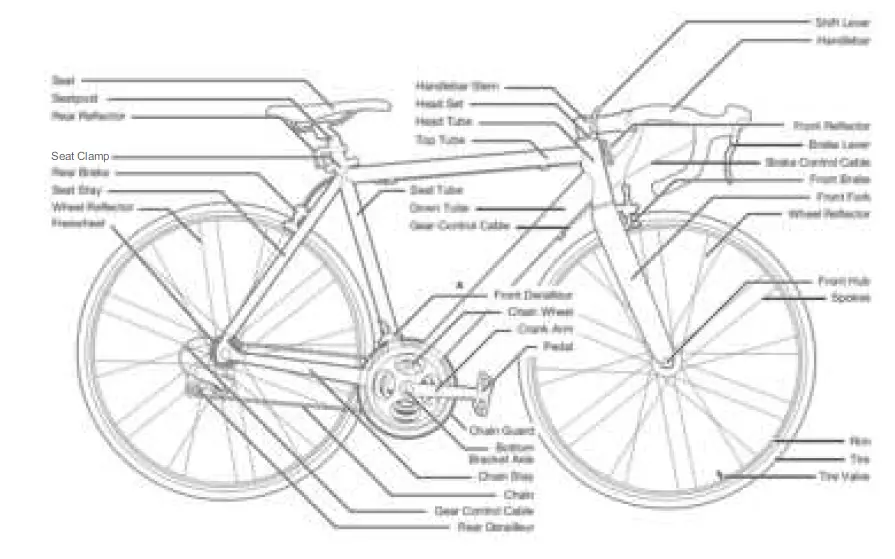
Tools Required (not included)
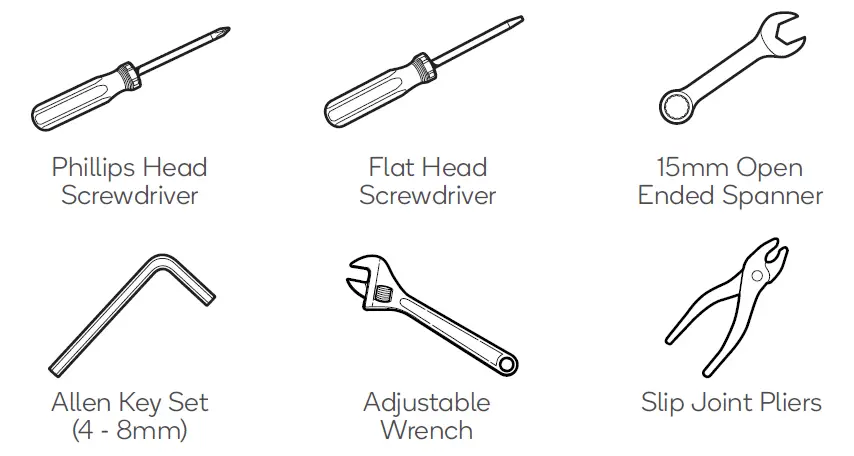
ASSEMBLY
Getting StartedOpen the box and check that all parts are present.We strongly recommend reading the user guide before beginning. If you aren’t comfortable with the assembly, you should bring your bike to your local bike shop to have a qualified mechanic put it together for you. Please ensure you need to read this entire user guide before you ride or let anyone else ride it.
CAUTION: As you assemble the bike, it’s a good idea to place a little white grease or anti-seize compound on the seat post, stem and threads of the bolts to prevent rusting.
Step 1: Aligning the forks
- The frame, handlebars, front wheel, and other components are attached with zip ties.Lift everything out in one piece, and set it down, with the chain facing upwards.
- Remove the zip ties, and remove any padding or packaging.
- First, align the fork. Rotate it, to ensure it moves freely without binding (Figure 1), making sure the fork is pointing in the right direction, with the fork blades facing forward (Figure 2).

Step 2: Attaching the pedalsBefore your first ride, please do the following checks and ensure your pedals are attached correctly.
- There is a right side pedal marked “R” and a left side pedal marked “L”
- The right pedal has a RED sticker, the Left pedal has a GREEN sticker.
- Pedal marked “R” has right hand threads. Tighten in a clockwise direction.
- Pedal marked “L” has left hand threads. Tighten in a counterclockwise direction (Figure 3).
- After putting some white grease on the threads of the pedal, place the pedal into the crank, and use your fingers to get it started. Threading it in can be tricky, so make sure to do it correctly. The top of the thread will rotate towards the front of the bike to tighten the pedals.
- Once finger tightened, use a 15mm open-ended spanner to torque them down. They are properly tightened when the pedal spindle, which is the axle that the pedal platform spins around, begins to bite into the metal on the crank.

WARNING: Incorrect installment of pedals into a crank arm will cause irreparable damage. Unless the shoulder of the pedal spindle is tight to the face of the crank arm, the pedal may back out causing serious injury or death. Make it tight so the shoulder is in complete contact with the surface of the crank arm.
Step 3: Attaching the crank
- If you have a 3 piece crank, check the crank bolts to ensure they are tightened (Figure 4). Re-check the bolts after your first ride.
- If you have a 1 piece crank, firmly grasp the crank arm on the left side of the bicycle and wiggle it gently. If there is any movement or play in the crank, use a 15 mm open-ended wrench to tighten the locknut.
- Repeat the process until there is no more play in the crank, being careful not to over tighten (Figure 5).

WARNING: Never ride your bike if the cranks are loose. This could damage the crank arms beyond repair, and result in a loss of control, injury or death.
Step 4: Installing the seat
- Add some white grease to the inside of the seat tube, and slide the seat post into the bicycle.
- Make sure that the minimum insertion mark is completely covered and that the seat is pointing forward in alignment with the bicycle (Figures 6 & 7).

WARNING: The seat post must be inserted far enough so that the minimum insertion marks cannot be seen.
Step 5: Installing the rear seat reflector
- Remove the seat post and seat.
- Loosen the screw on the clamp of the reflector until you can slide the reflector over the seat post.
- Once the reflector is on the seat post, reinsert the seat post back into the seat tube.
- Position the reflector so that it is perpendicular to the ground, and move it up on the seat post until it can be seen above the tire when viewing the bike from the rear (Figure 8).

Step 6: Seat clamp
- As your bike has a standard seat clamp (see Figure 9), use an Adjustable Wrench to tighten the nut securely.
- If your bike has a bolt on seat clamp , use a 4, 5, or 6 mm Allen Key to tighten the bolt securely.
- The seat should not be able to move back and forth, up and down, or side to side with the seat clamp tightened.

Testing Seat TightnessAfter installing the seat post into the bicycle and tightening the clamp, test the tightness of the saddle. Hold the seat firmly with both hands and try to move it side to side. The seat post should not move at all. The seat post and seat also should not move when the rider is seated. Ensure the seat clamp nuts at the top of the seat post are tight so that the seat does not tip forward or backwards.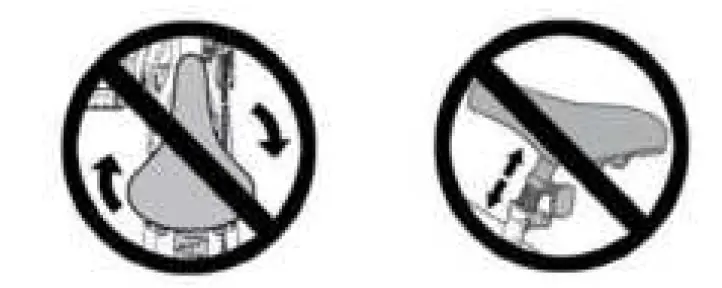
Handlebar/StemThis bike features a thread less stem (Figure 10) the stem has been pre-installed, to change handlebar height requires moving height adjustment spacers from below the stem to above the stem, or vice versa.Alternatively you’ll have to get a stem of different length or rise. Do not attempt to do this yourself, as it requires special knowledge and your bicycle should be taken to a professional bike shop for this adjustment.
Step 7: Securing the handlebars
- Loosen the bolts on the side of the stem, slide the stem into place, making sure it lines up with the fork .
- Check the gap between the steerer tube and stem, ensuring there is enough space to reinstall the cap and bolt.
- Snug the pre-load bolt on top. Then tighten the two bolts on the side of the stem, alternating each bolt.
- The handlebars should come attached to the stem. Simply ensure that the brake and derailleur cables track smoothly, and that the handlebar bolt(s) are properly tightened with a 4, 5, or 6 mm Allen Wrench (Figures 11-13).
- In the case of a 2 or 4-bolt stem, tighten the bolts alternating between bolts every few turns.

WARNING: To prevent steering system damage and possible loss of control, the stem must be inserted enough so that the minimum insertion marks are completely covered (Figure 14).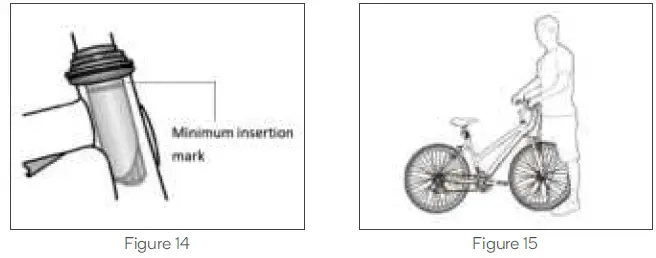
Testing Handlebar TightnessTo test the tightness of the stem, straddle the front wheel between your legs tightly (Figure 15). Try to turn the handlebar back and forth. The handlebar should not slip or move independently of the front wheel at all. If the handlebar does move, re-align the stem with the front wheel and tighten the stem bolt. Re-test to make sure the stem is secure with the same process.To test the tightness of the handlebar, hold the bike stationary and try to rotate the ends of the handlebar up and down or move the bar forward and back. If the handlebar moves, loosen the handlebar clamp nut or bolts evenly to re-position and then re-tighten. Repeat the test until the bars will not move.
Step 8: Installing the wheels
- Ensure the brakes are loose enough to allow the wheel to pass through the brake pads easily.
- Place wheel into fork drop outs.
- Install retaining washers with raised lip pointed towards the fork, and insert into the small hole of the fork blade (Figure 16).
- Install axle nut and securely tighten. Ensure the wheel is centered between the fork blades (Figure 17).
- Spin the wheel to make sure that it is centered and clears the brake shoes. Tighten the brakes if necessary.
- If the wheel is out of alignment you will need to realign the wheel. Contact your local bicycle shop to help realign the wheels.

WARNING: Ensure the wheel is in the center of the fork before tightening both nuts.WARNING: Failure to obey these steps can allow the front wheel to loosen or dislodge while riding. This can cause injury or death to the rider or to others.
Step 9: BrakesAfrer installing the front wheel, re-connect the front brake by squeezing the arms together, and sliding the cable guide back into the carrier (Figures 18 & 19).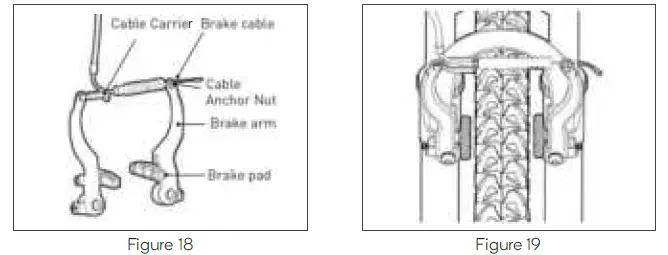
WARNING: When assembling or adjusting the brakes, make sure the cable anchor nut is tight (Figure 18). Failure to securely tighten the nut could result in brake failure and personal injury.
Testing Brake FunctionsTo test the function of the front hand brake, lifer the front of the bike and spin the wheel. The wheel should not rub on the brake pads. Next, squeeze the brake lever and take note of the brake pads contacting the side of the wheel. The pads should contact the rim on both sides at the same time. Finally, hold the brake lever firm and try to move the bike forward. The brake should hold well enough to keep the wheel from moving. Repeat these steps for the rear wheel
Step 10: Inflating the tiresUse a hand pump, foot pump, or floor pump to properly inflate the tires. The maximum inflation (PSI) is shown on each tire sidewall (Figure 20). If your pump does not have a built in gauge, use a separate pressure gauge to ensure the tires are inflated to the correct pressure.
WARNING: Tires must be properly inflated before riding. Never exceed the maximum pressure (PSI) that is listed on the side of the tire.WARNING: Be sure to check that the edge (beads) of both tires are evenly seated the entire way around on both sides of the tire. Failure to do so may result in the tire coming off of the rim, the tube popping (Figure 21), and a loss of control of the bicycle, causing injury or even death.
Recommended Tire PressuresThe recommended pressure molded on the sidewall of your bicycle tires should match the figures below. Use this as a general guide.
- BMX- 35 – 50 psi
- Mountain Bike – 40 – 65 psi
- Road Touring – 70 – 90 psi
- Hybrid/Crossbike – 60 – 100 psi
- Road Racing – 110 – 125 psi
Step 11: Installing front reflectorAttach the white reflector to the front reflector bracket and secure to the fork or handlebar using the hardware provided.
OPERATION
It’s important to your enjoyment and safety to understand how things work on your new bicycle. Even if you’re an experienced cyclist, don’t assume that the way things work on your new bike is the same as how they work on older bikes. Be sure to read and to understand this section . If you have even the slightest doubt as to whether you understand something, talk to your local bicycle specialist or contact Kogan.com for support.
Removing and Installing Bolt-on Wheels
Removing Bolt-on Front Wheel:
- Open up the brake shoes.
- With a 15mm box wrench or a 6 inch adjustable wrench, loosen the 2 axle nuts.
- If your front fork has a clip-on type secondary retention device, disengage it and go toStep 4. If your front fork has an integral secondary retention device, loosen the axle nuts about six full turns; then go to Step 4.
- Raise the front wheel a few inches off the ground and tap the top of the wheel with the palm of your hand to knock the wheel out of the fork ends.
Installing a Bolt-On Front Wheel:
- With the steering fork facing forward, insert the wheel between the fork blades so that the axle sits firmly at the top of the slots which are at the tips of the fork blades. The axle nut washers should be on the outside, between the fork blade and the axle nut. If your bike has a clip-on type secondary retention device, engage it.
- While pushing the wheel firmly to the top of the slots in the fork dropouts, and at the same time centering the wheel rim in the fork, use a 6inch adjustable wrench or a 15mm box wrench to tighten the axle nuts securely.
- Close the brake shoes; then spin the wheel to make sure that it is centered in the frame and clears the brake shoes.
Removing a Bolt-On Rear Wheel:
- Open the rear brake shoes.
- Shift the rear derailleur to high gear (the smallest rear sprocket) and pull the derailleur body back with your right hand.
- With a 15mm box wrench or a six inch adjustable wrench, loosen the 2 axle nuts.
- Lift the rear wheel off the ground a few inches, and with the derailleur still pulled back, push the wheel forward and down until it comes out of the rear dropouts.
Installing a Bolt-On Rear Wheel:
- Shift the rear derailleur to its outermost position and pull the derailleur body back with your right hand.
- Put the chain onto the smallest sprocket. Then, insert the wheel into the frame dropouts and pull it all the way into the dropouts. The axle nut washers should not be on the outside, between the frame and the axle nuts.
- Tighten the axle nuts securely, using a 6 inch adjustable wrench or a 15mm box wrench.
- Push the rear derailleur back into position.
- Close the brake; then spin the wheel to make sure that it is centered in the frame and clears the brake shoes.
Brakes AdjustmentFor most effective braking, use both brakes and apply them simultaneously.It is important for you to know which brake lever controls which brake on your bike. Ensure that your hands can reach and squeeze the brake levers comfortably.The braking action of a bicycle is a function of the friction between the brake surfaces – usually the brake shoes and the wheel rim. To make sure that you have maximum friction available, keep your wheel rims and brake shoes clean and free of lubricants, waxes or polishes.
Progressive Brake ModulationBrakes are designed to control the speed and to stop the bike. Maximum braking force for each wheel occurs at the point just before the wheel stops rotating and starts to skid. Once the tire skids, you lose most of the stopping force and all directional control.You need to practice slowing and stopping smoothly without locking up the wheel. The technique is called progressive brake modulation. Instead of jerking the brake lever to the position where you think you will generate appropriate braking force, squeeze the lever,progressively increasing the braking force. If you feel the wheel begin to lock up, release pressure just a little to keep the wheel rotating just short of lockup.It is important to develop a feel for the amount of brake lever pressure required for each wheel at different speeds and on different surfaces. To understand this, experiment by walking your bike and applying different amounts of pressure to each brake lever, until the wheel locks.
CAUTION: Some bicycle brakes, such as linear-pull and disk brakes, are extremely powerful. You should take extra care in becoming familiar with these brakes and exercise particular care when using them. Applying these brakes too hard or too suddenly can lock up a wheel, which could cause you to lose control and fall.CAUTION: Sudden or excessive application of the front brake may pitch the rider over the handlebars, causing serious injury or death.
Applying BrakesWhen you apply one or both brakes, the bike begins to slow, but your body wants to continue at the speed at which it was going. This causes a transfer of weight to the frontwheel, or, under heavy braking, around the front wheel hub, which could harm you.A wheel with more weight on it will accept greater brake pressure before lockup; a wheel with less weight will lock up with less brake pressure.Do the following as you apply brakes and your weight shirts forward:
- Shirt your body toward the rear of the bike, to transfer weight back onto the rear wheel;
- At the same time, decrease rear braking and increase front braking force.
- This is important on steep descents, because descents shift weight forward.
The key to effective speed control and safe stopping are controlling wheel lockup and weight transfer. Practice braking and weight transfer techniques where there is no traffic or other hazards and distractions.Everything changes when you ride on loose surfaces or in wet weather. Tire adhesion reduces, so the wheels have less cornering and braking traction and can lock up with less brake force. Moisture or dirt on the brake shoes reduces their ability to grip. The way to maintain control on loose or wet surfaces is to go more slowly.
Adjusting BrakesIf either brake lever on your bike fails the Mechanical Safety Check you can restore brake lever travel by turning the brake cable adjusting barrel counterclockwise, then lock the adjustment in by turning the barrel’s lock nut clockwise as far as it will go. If the lever still fails the Mechanical Safety Check, or if you have any question about whether your brakes are working properly have your brakes checked by a bicycle specialist or contact Kogan.com for support.
CAUTION: The brake cable adjusting barrels are for minor adjustments only. For major adjustments, see the “Step 9: Brakes” in the Assembly section of this user guide.
Shier Adjustment
Adjustment Front Derailleur: (Figure 22)
- Shirt the rear shier to the smallest number indicated, then shift the front shorter to the smallest number indicated. Disconnect the front derailleur cable from the cable anchor bolt and place the chain on the smallest chainwheel.
- Ensure the front derailleur cage is parallel with the outer chainwheel on the crankset.There must be a 3 – 5mm gap between the bottom of the derailleur cage and the top of the outer chainwheel teeth to ensure the derailleur will clear the chainwheel when shying.
- Adjust the low limit screw so the chain is centered in the middle of derailleur cage. Pull all slack out of the cable by pulling it taut, then reconnect the cable and tighten the cable anchor bolt securely.
- Shirt the front shier into the largest gear and pedal the bike so the chain jumps to the largest chainwheel. If the chain does not shirt onto the largest chainwheel, you will need to turn the high limit screw counter-clockwise until the chain moves to the largest chainwheel. If the chain falls into the pedals, the high limit screw has been turned too far. You will need to readjust the high screw clockwise in 1/4 turn increments until the chain no longer falls off.
- Shift through each gear ensuring all are achieved quietly and without hesitation. Some shifters may have an adjusting barrel. Use the adjusting barrel to fine tune the adjustment of the chain location. Turn the adjusting barrel clockwise will move the derailleur inboard – towards the frame, while turning it counterclockwise will direct the chain outboard – away from the frame.
WARNING: Do not operate a bicycle that is not shifting properly. Overlooking proper adjustments may cause irreparable damage to the bicycle and/or bodily injury. Never move the shier while pedaling backward or pedal backward artery having moved the shorter. Doing so may jam the chain and cause serious damage to the bicycle and/or rider.
LubricationAll the pivoting points of the front and rear derailleurs should be lubricated with light oil at least once a month. Be sure to wipe off any excess oil to prevent attraction of dirt into the mechanisms. The shying cables should be cleaned and re-coated with a thin layer of grease every 6 months, or whenever new cables are being installed.
Adjustment – Rear Derailleur: (Figure 23 & 24)The Low limit screw determines how far the rear derailleur will travel toward the wheel of thebicycle, while the High limit screw determines how far the cage will travel toward the frame.
- Shirt the rear shier to the largest number indicated, disconnect the rear derailleur cable from the cable anchor bolt and place the chain on the smallest sprocket.
- Adjust the High limit screw so the chain and the smallest sprocket are lined up vertically. Remove any slack in the cable by pulling it taut, then reconnect the cable and tighten the cable anchor bolt securely.
- Some derailleurs have an adjusting barrel (see drawings). Use the adjusting barrel to fine tune the adjustment of the chain location. Turning the adjusting barrel clockwise will move the derailleur inboard – towards the wheel – while turning it counterclockwise will direct the chain outboard – away from the wheel.
- Shirt the chain onto the largest sprocket; adjust the low limit screw so the chain and the largest cog are lined up vertically. If you are unable to get the chain to the largest cog, turning the Low limit screw counterclockwise will enable the chain to move towards the wheel.
- Shirt through the gears ensuring each gear is achieved quietly and without hesitation.

Note:Some bicycles may be equipped with a rear derailleur mechanism that works in REVERSE to the directions above.
MAINTENANCE
LubricationLubrication should be performed by a qualified bicycle mechanic for the parts to be disassembled. The information provided in this user guide about the service is for only thosewho are comfortable doing the maintenance.The following are examples of the type of service you should perform yourself. All other service, maintenance and repair should be performed in a properly equipped facility by a qualified bicycle mechanic using the correct tools and procedures.
Break-in Period:Your bike will last longer and work better if you break it in before riding it hard. Control cables and wheel spokes may stretch or “seat” when a new bike is first used and may require readjustment by your local bicycle repair shop. The Safety Checklist section of this user guide will help you identify the things that need readjustment.
After every long or hard ride:if the bike has been exposed to water or grit; or at least every 160km: Clean the bike and lightly lubricate the chain’s rollers with a good quality bicycle chain lubricant. Wipe off excess lubricant with a lint free cloth. Lubrication is a function of climate. Talk to your local bicycle shop about the best lubricants and the recommended lubrication frequency for you area. Avoid contaminating the rims with lubricant!
After every long or hard ride or after every 10 to 20 hours of riding:
- Squeeze the front brake and rock the bike toward and back. Everything feel solid? If you feel a clunk with each forward or backward movement of the bike, you probably have a loose headset. Have your local bike shop check it.
- Lift the front wheel off the ground and swing it from side to side. Feel smooth? lf you feel any binding or roughness in the steering, you may have a tight headset. Have your local Dike shop check IT.
- Grab one pedal and rock it toward and away from the centerline of the bike; then do the same with the other pedal. Anything feel loose? If so, have your local bike shop check it.
- Take a look at the brake pads. Starting to look worn or not hitting the wheel rim squarely? lime to have the local bike shop adjust or replace them.
- Carefully check the control cables and cable housings. Look if any rust, kinks, or fraying has occurred and it so, have your local bike shop replace them.
- Squeeze each adoining pair of spokes on either side of each wheel between your thumb and index finger. Do they all feel the same? if any teel loose, have your local bike shop check the wheel for tension and trueness.
- Check the tires for excess wear, cuts or bruises. Have your local bike shop replace them it necessary.
- Check the wheel rims for excess wear, dings or dents and scratches. Consult your local bike shop it you see any rim damage.
- Check to make sure that all parts and accessories are still secure, and tighten any which are not, including but not limited to pedals, crank arms, cndins, sedt post, and handlebars.
- Check the frame, particularly in the area around all tube joints; the handlebars; the stem; and the seat post for any deep scratches, cranks or discoloration. I hose can be signs of stress-caused fatigue and indicate that a part is at the end of it’s useful life and needs to be replaced.
Service Checklist
Note:The frequency of maintenance should increase with lots of usage and use in wet or dusty conditions. Do not over lubricate – remove excess lube to prevent dirt build up. Never use a degreaser to lubricate your chain.
WARNING: Like any mechanical device, a bicycle and its components are subject to wear and stress. Different materials and mechanisms wear or fatigue from stress at different rates and have different life cycles. If a component’s life cycle is exceeded, the component can suddenly and catastrophically fail, causing serious injury or death to the rider. Signs of stress – caused fatigue indicate that a part is at the end of it’s useful life and needs to be replaced.
TROUBLESHOOTING
Gears/Chain: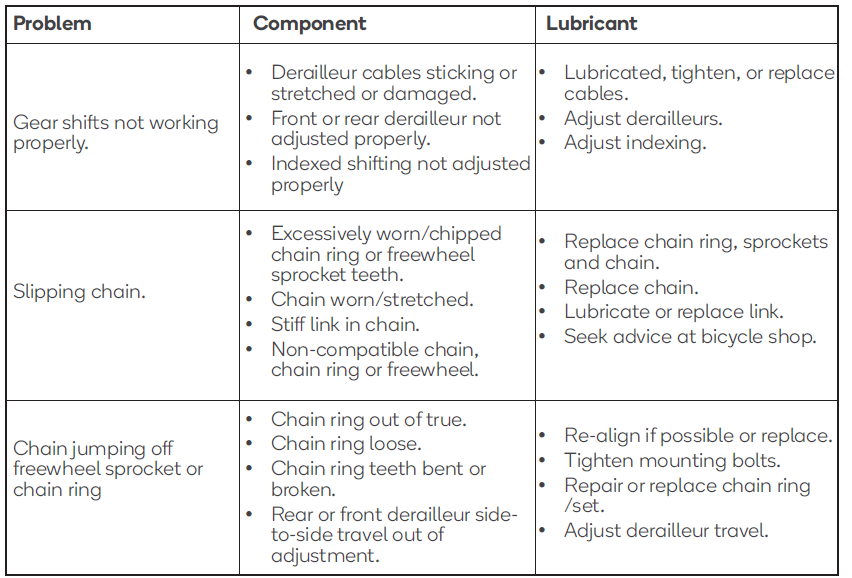
Pedals: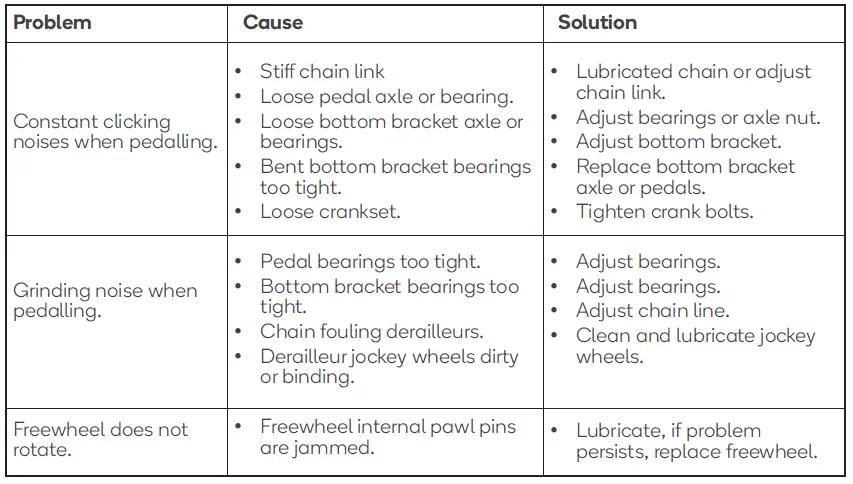
Brakes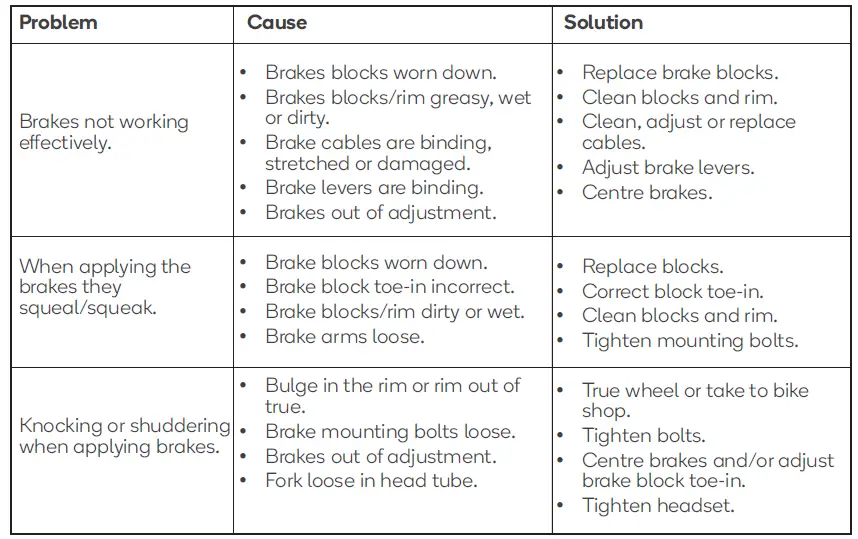
Wheels/Tires: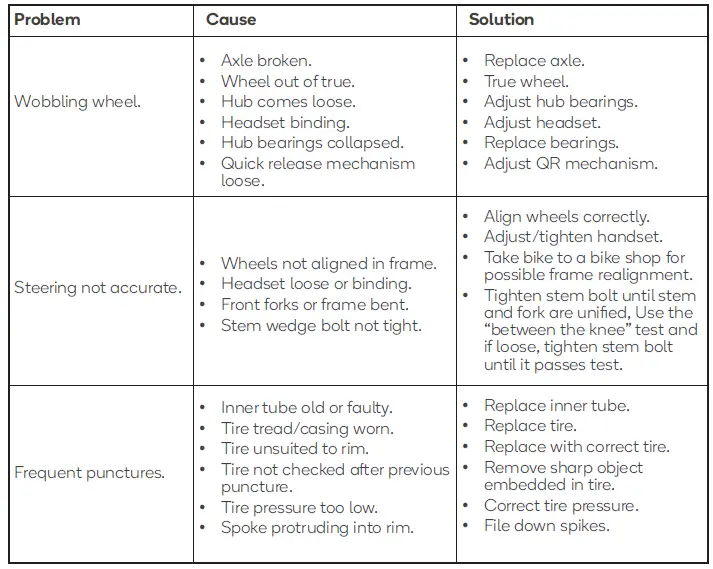
Need more information?We hope that this user guide has given you the assistance needed for a simple set-up.For the most up-to-date guide for your product, as well as any additional assistance you may require, head online to help.kogan.com
[xyz-ips snippet=”download-snippet”]

